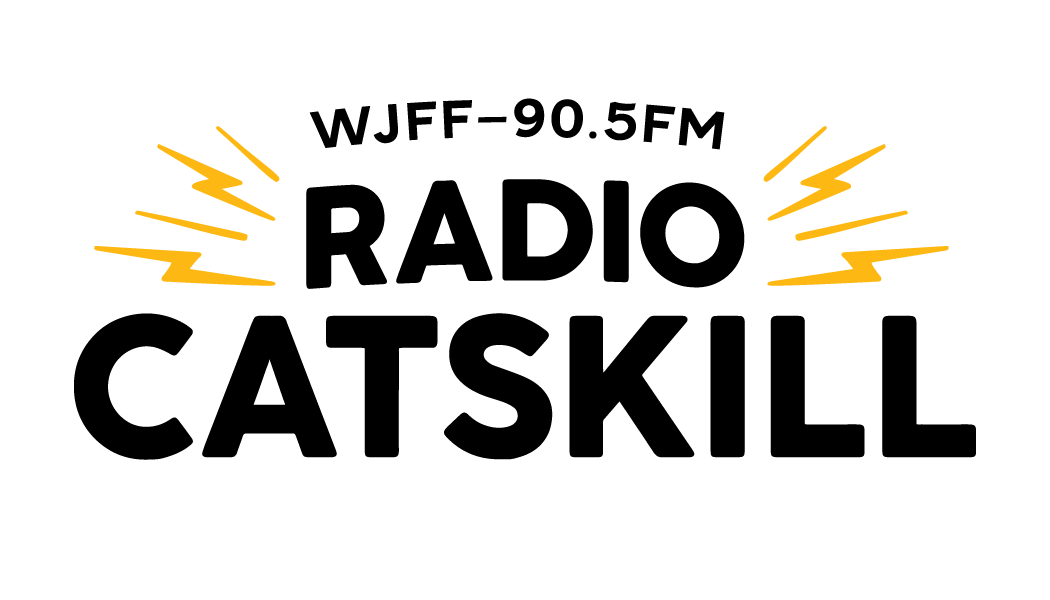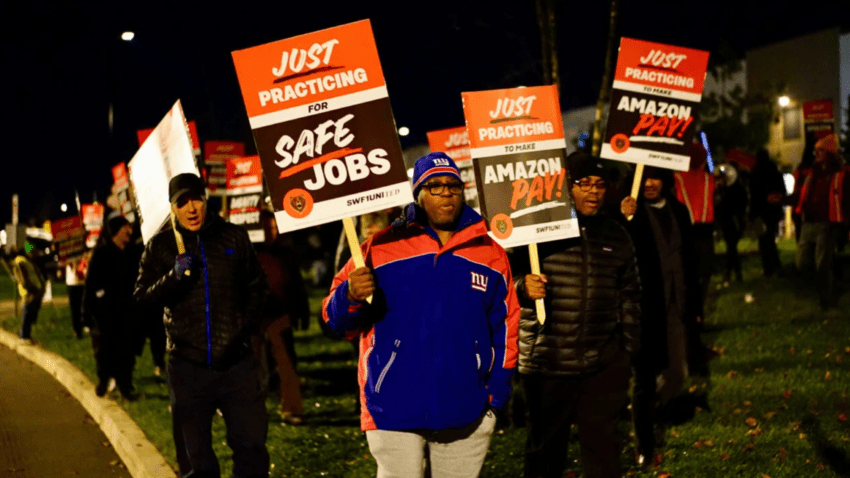When you receive one of those Amazon cardboard boxes with black tape, there are hundreds of thousands of warehouse workers behind the scenes – packing, stocking, and shipping products around the clock – to make it happen.
At Amazon’s SWF1 facility in Rock Tavern, N.Y., most morning shifts start the same, says Amazon worker Niklas Moran. There’s a standup meeting, and workers put on their protective gear. But it’s what happens during those 10-hour shifts, he says, that can quickly become dangerous for workers.
“People were [working] in the trucks with exhaustion. We’ve been demanding that management rotate people out so that they’re not in the trailers for too long unloading or loading the trailers,” said Moran.
Some workers at the Orange County warehouse say heat exhaustion, frequent injuries, and unrealistic expectations from management have persisted well into the summer’s hot weather conditions.
“They’ve been pushed to the brink by management,” said Moran.
Amazon released a statement on July 8 that the company already has protocols in place to keep workers cool and safe throughout the day, like equipping delivery stations with ice machines and keeping operation sites climate controlled. Amazon spokesperson Steve Kelly wrote to Radio Catskill that “all employees are empowered to take preventive cool down breaks whenever needed and are encouraged to promptly report temperature-related concerns.”
Growing footprint in the Hudson Valley?
Nestled in the small town of Rock Tavern is a million-square-foot Amazon fulfillment center referred to as SWF1, where Moran and his coworkers are based. It opened in July 2021 in Rock Tavern’s town of 3,000 people and currently employs hundreds of workers at the International Boulevard location.
Earlier this year, Amazon attempted to build another warehouse in Wawayanda just twenty miles from the existing Orange County warehouse. Later in June, the town of Wawayanda rejected Amazon’s proposal to build a new 3.2 million square foot warehouse in Orange County.
Amazon had also requested a 20-year Payment In Lieu of Taxes, or PILOT agreement, from the Orange County IDA that would have granted them millions in sales tax exemptions. The town zoning board ultimately shot down the proposal unanimously due to building height restrictions.
The proposal drew both mixed support and opposition to Amazon potentially expanding its footprint in New York’s Hudson Valley area. Some of that opposition came from current Amazon workers warning that residents don’t know what it’s really like to work for the $2 trillion company.
Kristen Hughes is one Amazon worker who strongly opposed the plan. At a June 10 public hearing, she says she’s seen too many of her colleagues settle for low wages and dangerous working conditions just to make ends meet.
“I have no idea how many 18 and 19-year-olds I have seen break their bodies for this company and not be able to get workers comp fulfilled,” said Hughes at the hearing. Some proponents said the proposed warehouse would stimulate the economy and bring jobs, while opponents said the jobs would be low-wage, physically taxing work and if built, Amazon should pay its fair share of taxes.
Starting wages for a warehouse associate typically range between $18.50 to $21.75, according to Amazon’s hiring website, for eight to 12-hour shifts to lift, pack, and move heavy boxes of inventory up to 49 pounds.
‘Unreasonable and frankly dangerous for workers’
Moran has worked at the Rock Tavern facility for three years. He lives in Beacon but drives into Rock Tavern, picking up several of his colleagues along the way. He alleges that high pressure from management to overstuff warehouse bins with inventory often leads to frequent injuries, adding that he previously broke his finger on the job after it was crushed between warehouse cages trying to quickly move them.
“Just the pace of work and expectations are unreasonable and frankly dangerous for workers,” said Moran. “[Management] has expectations of how fast things would take, which are just not reasonable. It’s a big warehouse. You gotta drive from one place to another, picking up large items and properly put them in the bin so that we don’t hurt ourselves.”
In a viral TikTok video with more than 8,000 comments, several dozen Rock Tavern workers are seen sharing their concerns directly with management. One recent issue they have raised is a sudden change to their break schedule – from two shorter breaks to one longer break, which some workers say could lead to more injuries and exhaustion.
“The same week I had an abdominal injury here, two other stowers herniated themselves. Our department was turned into a hernia factory,” said one worker in the video.
Amazon spokesperson Steve Kelly wrote in an email to Radio Catskill that “employee safety is our top priority at SWF1 and across our network.” He added that the break schedules were adjusted “in part, in response to employees asking for longer break periods.”
Kelly says Amazon has reduced their recordable incident rate by 31% in the U.S. and already has heat safety procedures and training in place to minimize risk.
“Our approach includes a commitment to manageable workloads—employees are encouraged to work with intention, not speed,” wrote Kelly in the email. “We have comprehensive prevention procedures and training to ensure workplace safety, including heat safety protocols that help employees recognize signs of heat-related illness, understand risk factors, follow hydration guidance, and respond to suspected incidents.”
Last December, a U.S. Senate committee led by Senator Bernie Sanders accused Amazon of manipulating workplace injury data to make its warehouses seem safer than they are. The Senate Health, Education, Labor, and Pensions Committee (HELP) investigation led by Senator Sanders found that Amazon workers were nearly twice as likely to be injured compared to other warehouse workers in the sector.
Amazon responded to the investigation saying it featured “selective, outdated information that lacks context and isn’t grounded in reality.”
The fight for better working conditions
For Amazon worker Niklas Moran, he says he’s tired of being told to work faster, not safer. For months, he and his coworkers have been trying to form a union with the help of Teamsters and local policy and advocacy nonprofit, For the Many, to advocate for better wages and worker conditions.
For the Many’s Labor Organizer Vanessa Cid said trying to formalize a union at the Rock Tavern facility hasn’t been easy. She says Amazon has been doubling down on union busting efforts, like putting anti-union signs in employee bathrooms.
“There’s ongoing issues at that facility, but workers are still trying to push through,” said Cid.
In response to allegations about union busting efforts, Amazon spokesperson Kelly said “our employees have the choice of whether or not to join a union. We believe that both decisions should be equally protected which is why we talk openly, candidly and respectfully about these topics, actively sharing facts with employees so they can use that information to make an informed decision.”
For now, Moran says he’ll keep pushing for better worker conditions. He and his colleagues have been educating their coworkers on what a union is – and what it isn’t. He said he and his peers will continue to look out for one another and called on others to join him.
“To all the Amazon workers, it’s time to get involved and time to fight back.”
Modification: This article has been updated to include Amazon’s response to heat protocols and break schedule changes. Radio Catskill also added additional clarity to the name of the Senate committee and the weight of the boxes workers typically carry.
Image: Amazon SWF1 workers and labor allies rally outside the Amazon warehouse in Rock Tavern, N.Y. in November 2023 (Photo Credit: International Brotherhood of Teamsters)

